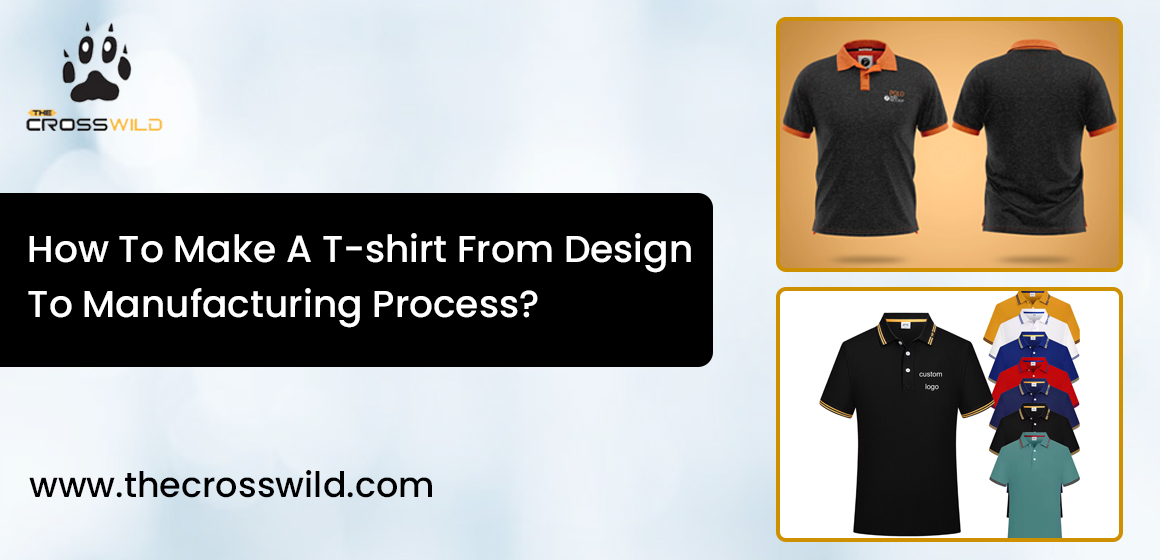How To Make A T-shirt From Design To Manufacturing Process?

T-shirts are one of the most durable, versatile garments with appeal that is worn as an outerwear or underwear as per your choice and convenience. Since 1920, T-shirts have evolved into a huge potential market for all the ages and types. T-shirts have variety of colors, patterns, and styles, such as the standard crew neck and V-neck, as well as tank tops and scoop necks. T-shirt sleeves may be short or long, capped. Add-on features include pockets and decorative trim. T-shirts are the most popular garments on which to display one's interests, tastes, by customizing screen prints as per their interest and beliefs.
T-shirts are just a perfect fit for anyone in any size, from babies to seniors. Sizes vary from small, medium, large, and extra-large.
T-shirt Manufacturing Process Step by Step
Making of T-shirts is a simple and automated process. Specifically designed machines with integrated cutting, assembling, and stitching for efficient and smooth operation. The commonly used seams for T-shirt manufacturer in Jaipur are narrow, superimposed seams, which are usually made by placing one piece of fabric onto another and lining up the seam edges. These seams are frequently stitched with an over edge stitch, which requires one needle thread from above and two looped threads from below. This particular seam and stitch combination results in a flexible finished seam.
Steps To Print T-shirt
These are the following Steps which is used widely in t-shirt printing:
Styling
The T-shirt style is designed with creative people around along with the dimensions which is then transferred to patterns. Adjustments are made for size differences and cosmetic preferences.
Cutting Process
The T-shirt sections are again cut to the dimensions of the desired patterns. These pieces consist of a tubed body, or independent design structure with back sections, sleeves, perhaps pockets, and trim.
Stitching the Shoulder Seams
Ideally, sewing on the shoulders requires superimposed stitching, which is a simple process. Highly customized T-shirts, with designs created by creative minds, may reinforce the stitching with tape or elastic. Depending on the style of the T-shirt, sewing on the shoulders can be completed before or after attaching the neckband.
Finishing Operations
Customized T-shirts are also inspected for any defects in the fabric, stitching, and thread.
They are then folded and packed in printed bags, usually made of transparent plastic, with product information written on them. The shirts may be wrapped or folded on a piece of cardboard to maintain their shape during shipping and on the shelf. Finally, they are placed in boxes by the dozen or half-dozen.
The Future
With the growing trend in the T-shirt industry, new ideas are emerging every day, including new technologies like LED T-shirts, which are a growing trend in this new era. As you know, the process and manufacturing of T-shirts are growing. You already know what they are and how they're made, but all you need to do is unleash your creativity and submit your design to a manufacturer, and you'll receive the final product at your doorstep within a few working days.